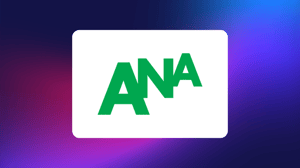Easily manage and organize your video library with a scalable solution built for streamlined control and delivery.

Attention: Why It's More Than Just Viewability 2.0
Byline by Jesse Fisher, head of advertising products at JWP Connatix.
In a world full of advertisements, the burning question remains: How can we keep consumers truly engaged? As our industry evolves daily, advertisers are taking a deeper look, moving beyond conventional metrics like viewability, and embracing innovative measurement tools to gauge attention.
However, as new measurement tools arise, so does the need for standardization as we navigate uncharted territory.
Innovative Adaptation from Viewability to Attention
Comparing viewability to attention is like comparing a basic outline to a detailed painting; viewability provides a simple framework, while attention offers a more nuanced understanding, yet both are important in the journey to the final product. Viewability is a digital advertising metric used to determine if an ad was seen, giving advertisers insight into what percentage of ad impressions served were viewable. Typically, ads below the fold – or located in a place on the webpage that requires scrolling down to see them – would be non-viewable.
On the other hand, attention, most recently recognized by the IAB, is a metric that aims to show whether the consumer has or is likely to notice, engage, and resonate with the advertisement, to complement metrics like viewability, and empower advertisers to assess the correlation between attention and other performance outcomes. The key question attention looks to answer is around incrementality, and one of the attractive benefits is that the results come with much less latency relative to closed-loop measurement and lift studies.
Keeping up in today's ever-evolving industry means keeping a pulse on innovations that can elevate strategies, which is why we're witnessing a growing trend among marketers to delve deeper, utilizing attention metrics to their advantage. There are multiple companies working to help track the success of attention by leveraging machine learning to analyze eye-tracking data, media quality signals, and more. Publishers like The New York Times have even begun leveraging these innovative ways to measure attention and gauge whether their readers are actually paying attention to ads.
To stay ahead in today's dynamic landscape, re-evaluating antiquated methodologies and embracing a more dynamic approach to measurement and strategy is key. Conventional metrics like viewability only scratch the surface when measuring the impact and return on campaign ad spend. The shift from viewability to attention metrics means moving away from legacy signals like how much time was spent on the page and how much of the page was covered, and toward attention metrics which measure inventory quality and user engagement without requiring IDs, which is also important as we await the cookieless future.
Essentially, Attention metrics allow us to think about the position and coverage on the page, the amount of clutter on the page or around the ad, time spent, and various other engagement signals from the user. Attention isn't made up of one specific metric, but rather many metrics that signal interest and engagement including click-through rates, hover rates, interaction rates, completion rates, conversion rates, and more. Attention isn't necessarily the singular, ultimate metric that should define success, but rather a metric that can work with others to help us understand and track the success of a particular creative copy, call-to-action, audience, targeting tactic, and/or the campaign as a whole.

